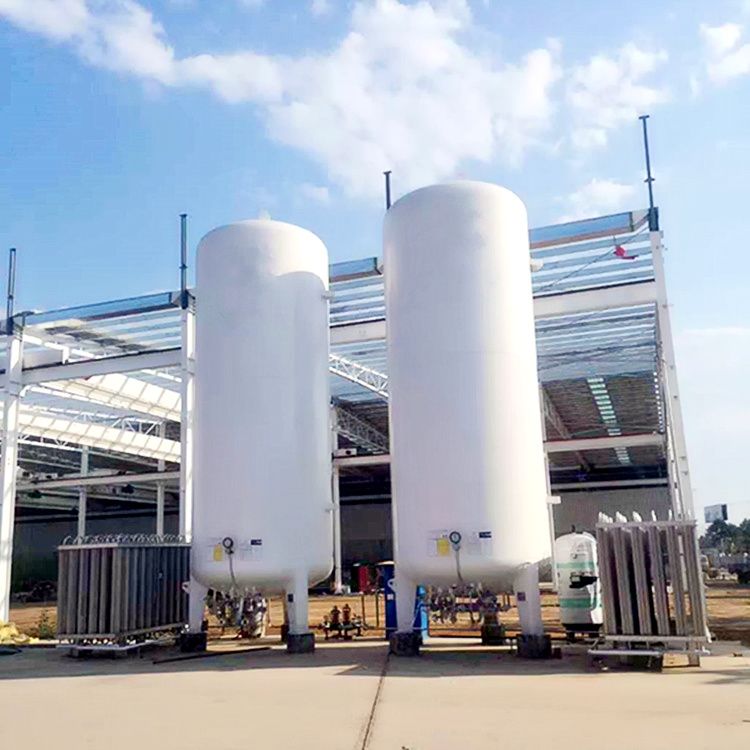When filling the carbon dioxide storage tank with liquid, the following points should be noted:
- Operators must first understand the filling procedure and operating instructions for carbon dioxide storage tanks; pressure gauge valves and shut-off valves should remain open.
- During operation, carbon dioxide storage tanks must comply with the requirements and methods specified in JB6898 “Operating Rules for Cryogenic Liquid Storage and Transportation Equipment.”
- Distinguish between initial filling and routine filling. Open the liquid level gauge before filling. For initial filling, purge and replace the tank with high-purity CO₂ to achieve the required purity level.
- Position the CO₂ tanker approximately 3 meters from the storage tank. After all preparatory work meets specifications, connect the tanker’s liquid transfer hose to the tank’s inlet port. When liquid sprays from both the tanker’s outlet valve and the tank’s purging valve, open the tank’s inlet valve and close the purging valve to fill the tank with CO₂.
- During filling, open the vent valve and monitoring valve of the CO₂ storage tank. Closely monitor the level gauge and monitoring valve to prevent overfilling (filling factor 0.6). Immediately stop filling when liquid sprays from the monitoring valve, then close both the tanker outlet valve and storage tank inlet valve.
- After completely purging residual liquid and gas from the transfer line, disconnect the transfer hose and close both the monitoring valve and vent valve.

Overview of Cryogenic Carbon Dioxide Storage Tanks
Carbon dioxide storage tanks are primarily used to store liquid carbon dioxide. LCO₂ tanks feature a double-walled structure composed of inner and outer vessels, categorized into vertical and horizontal types. Certain equipment in petrochemical and industrial facilities operates under cryogenic conditions. Pressure vessels functioning below -20°C are generally classified as cryogenic pressure vessels.
1.Technical Parameters of Cryogenic Carbon Dioxide Storage Tanks Key technical specifications include:
- Volume (m³)
- Operating Pressure (MPa)
- Design Temperature (°C)
- External Dimensions (Diameter × Height)
- Pressure Rise Rate (kPa/day)
- Weight (kg)
- Operating Medium (Liquid Carbon Dioxide)

2.Product Design Process for Cryogenic CO₂ Storage Tanks
Upon arrival at the unloading station, gas-phase and liquid-phase pipelines connect the storage tank to the tanker truck. The CO₂ is transferred into the storage tank using the tanker’s liquid transfer pump. The CO₂ within the storage tank exists as a liquid at -23°C to -30°C, maintained at this low temperature by a refrigeration unit. After vaporization in the vaporizer, the liquid carbon dioxide is pressurized through a pressure reducing valve for workshop use. It can also be filled into cylinders.
The design of cryogenic carbon dioxide storage tanks is meticulously engineered. Liquid carbon dioxide storage tanks produced by Excellent Gas Equipment utilize a “combination system valve” with two sets of valves operating simultaneously. During scheduled valve calibration, one side can be shut down while the other continues operation, ensuring uninterrupted tank functionality.

